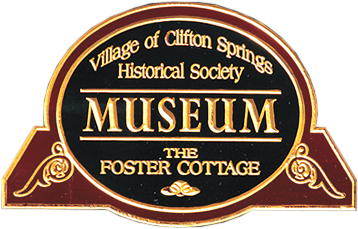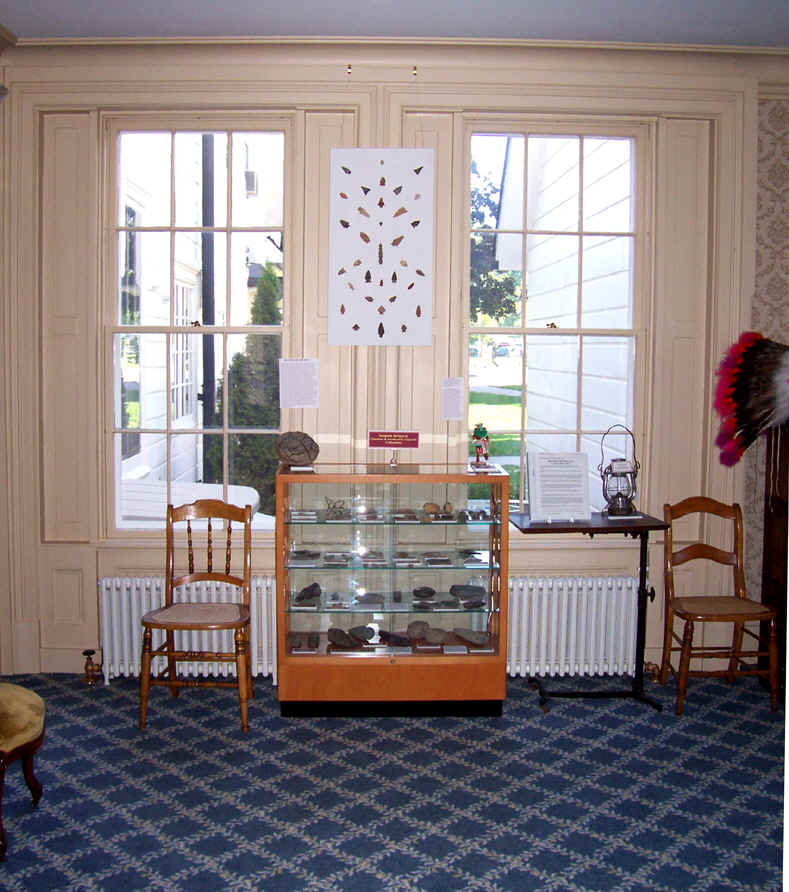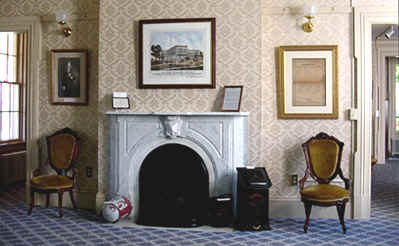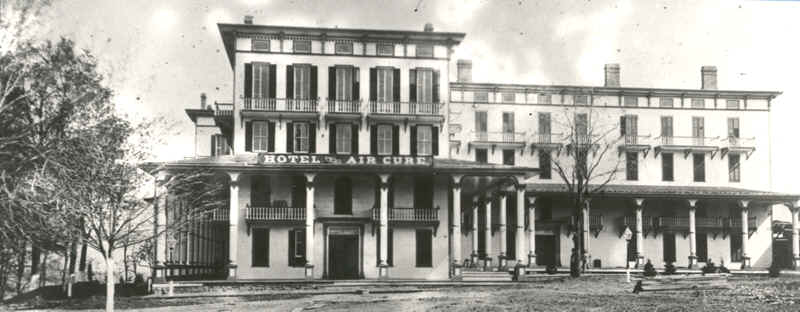Virtual Tour of Foster Cottage Museum
West Room - (Downstairs) Local History
(South side-Indian artifacts)
The items in the display case are on loan from the Charles Gifford family. Mr. Gifford began this collection as a
young lad growing up on his farm north of Phelps NY. His collection continued on the Sanitarium Farm where he was head
of the creamery for many years. Some of the artifacts were found in back of the Clifton Springs Sanitarium where a
settlement of Indians built on the sand banks sometime (we believe) in the 1500'x. Mr. Gifford did "trade" some of
the articles with other area collectors of the Indian culture so the collection is mixed and cannot be fully accredited
as to where it was found or at what date. The fact remains that the collection is an extensive one and denotes the fine
work done by these early tribes.
We live in the heart of the Iroquois Confederacy, which consists of five Indian tribes, which banded together to protect
themselves from the the Algonquin tribes to the north. They were from west to east, the Seneca , the Cayuga, the Onondaga,
the Oneida and the Mohawk. This Confederacy was known collectively as the Iroquois. A sixth tribe, the Tuscarora Indians
of North Carolina, were later defeated in war and joined the Confederacy in 1722.
It of interest to note that part of out own type of government is copied from this early grouping of Native Americans. We,
like them joined, a collection of early 13 states into a "United" States of America.
Clifton Springs is located in the center of what used to be the Seneca Nation. The Senecas were known as the "keepers of
the Western Door". The Indian history of this area is a rich one and serves to remind us of the natives that were here
long before the European powers came to settle here. We often wonder if the native Americans of the time used the sulphur
waters for medical conditions much as did Dr. Foster when he came here in 1850.
The picture over the fireplace in the west room is of the old hotel, which once stood on East Hill where present day Maxwell Hall stands. A Mr. Powell from Geneva came here in 1807 and put up the first small hotel above the springs. This grew over the years and by the time of the Civil War was a large building housing the Clifton Springs Air Cure, which competed with Dr. Foster's Water Cure for patients. This was a lively place with a bar and where dances were often held in contrast to Dr. Foster's "quiet and sedate" building with the concept of no drinking or unseemly activity. The building "mysteriously" burned to the ground in cold month of January 1872.
Dr. Foster bought the lot, on which it stood, shortly thereafter. Years later this land became the sight of
Maxwell Hall, which was erected as a nurse's residence in 1926/27. This building was later used by several firms and is now the
home of FLACRA, (Finger Lakes Addiction Counseling and Referral Agency, Inc.) Somehow, I believe that Dr. Foster would be pleased
to know that there was an organization TODAY on his old site, which is continuing the fight against alcohol abuse!
To look at the water bucket near the fireplace, one would wonder WHY it had a round bottom. How could one stand it up and where
would you store it?
The story goes that the early fire department was forever losing its fire buckets. After a fire, they would just disappear. They
solved the problem but making a wooden rack with holes in it for the side of their fire fighting rig and installing "round"
bottomed pails. Top their delight, no one seemed encouraged to "lift" a round bottomed pail and they were always on hand to
fight a fire.
Also near the fireplace is a tin container for the storage of fireplace ashes so one could store them and not have to take them
out each time a fire was lit.
The engraving on the west wall was done in 1892 and is a sketch of the Village of Clifton Springs as it looked at the time. It
is a faithful rendering of the community of 1892 and shows the second set of buildings that Dr. Foster raised on the site.
We have three more rooms with additional artifacts on display relative to the history of the village of Clifton Springs. So
please stop in



